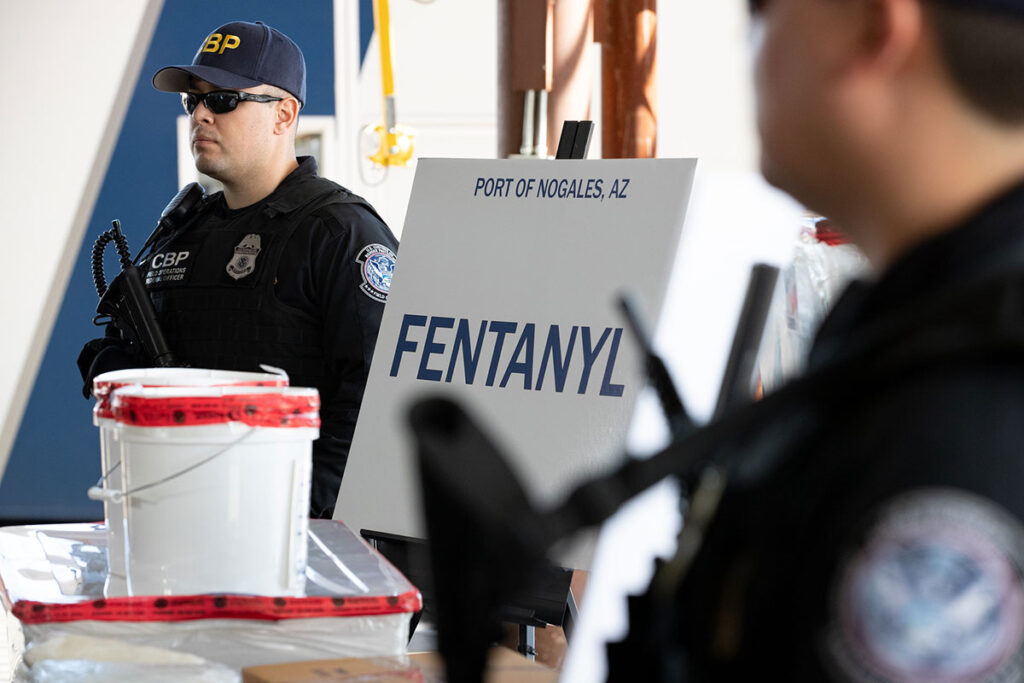A Legislative Step Toward Safer Emergency Response
As the synthetic opioid crisis intensifies across the United States, lawmakers are moving to better protect first responders who risk accidental exposure to fentanyl and other highly potent substances during routine field operations. The Protecting First Responders from Secondary Exposure Act of 2025 (S. 180), introduced in the Senate by a bipartisan group led by Senators Chuck Grassley (R-IA) and Amy Klobuchar (D-MN), would authorize federal grant funding to support the purchase and deployment of containment devices, along with targeted training for their use.
First responders—including law enforcement officers, firefighters, paramedics, and other emergency personnel—often face occupational hazards when responding to overdose scenes or seizing illicit drugs. Even trace amounts of synthetic opioids can be dangerous if inhaled or absorbed through the skin, particularly in confined spaces or when substances are unknowingly disturbed.
What the Bill Would Do
S. 180 would amend the Omnibus Crime Control and Safe Streets Act of 1968 to expand the allowable use of federal grants under the Department of Justice’s Comprehensive Opioid, Stimulant, and Substance Use Program (COSSUP). Specifically, the legislation would:
- Enable jurisdictions to purchase containment devices that help prevent the release or spread of powdered or aerosolized opioids;
- Support training programs for frontline responders on how to safely use these devices in unpredictable field conditions.
These measures would help integrate protective containment practices into day-to-day emergency response efforts without requiring full-scale hazardous materials teams.
Fiscal Outlook and Implementation
According to a June 2025 report by the Congressional Budget Office (CBO), the legislation would cost approximately $28 million over five years, assuming grants of around $2 million per year to several jurisdictions. While the broader COSSUP program expired in 2023, Congress has continued funding it, with $189 million allocated for 2024. This estimate addresses only the new activities outlined in S. 180, not reauthorization of the entire program.
The grants are expected to be competitive, offering support to state, local, and tribal governments seeking to bolster frontline readiness in the face of escalating synthetic opioid threats.
Why This Matters for Health Security and National Preparedness
Protecting frontline personnel from unintentional exposure to fentanyl is not only an occupational safety issue—it is a public health and national security imperative. First responders—including law enforcement, EMS, firefighters, and public health professionals—are often the first point of contact with unknown substances during emergencies. When properly equipped and trained, they not only safeguard their own health but also reduce broader public risk through timely, coordinated response.
S. 180 provides a concrete step toward embedding occupational safety into routine field operations, particularly for jurisdictions that lack specialized hazardous materials teams or advanced protective equipment. By reducing barriers to access, the bill strengthens operational readiness across communities facing ongoing synthetic opioid threats.
Bipartisan Response to an Evolving Risk Environment
The bill reflects bipartisan acknowledgment that modern drug threats demand modern protection. Fentanyl and its analogs are not only deadly but also difficult to detect and safely manage without appropriate containment technology. Exposure risks are not theoretical—multiple high-profile incidents have highlighted how even trace amounts of airborne or surface powder can cause adverse effects in unprotected personnel.
S. 180 would help normalize the use of portable containment tools and field-based safety protocols as part of standard emergency response, particularly in overdose scenes, drug seizures, and community-based public health crises.
Policy Contradictions: Budget Cuts Threaten Implementation Capacity
Despite the promise of S. 180, its effective implementation is at risk due to sweeping federal policy changes proposed in the Trump-Vance Administration’s FY 2026 budget. Among the most consequential is the proposal to eliminate the National Institute for Occupational Safety and Health (NIOSH) as an independent agency by transferring its core functions to the National Institutes of Health (NIH).
This proposed reorganization would:
- Terminate NIOSH’s extramural research and training programs, including responder safety training, PPE evaluation, and field exposure mitigation;
- Discontinue state-based occupational health surveillance systems, which are key to detecting patterns of harm among emergency personnel;
- Cut workforce capacity within CDC’s occupational health and emergency preparedness divisions, leading to the loss of institutional expertise, strained technical assistance, and reduced capacity to develop or disseminate field guidance;
- Deepen internal turmoil across federal public health agencies, including CDC and HHS, where reorganization efforts have triggered retirements, morale declines, and operational disruption.
NIOSH has long served as the nation’s lead entity for research and guidance on workplace exposures—including fentanyl—and plays a critical role in equipping state and local responders with best practices. Without this infrastructure, local agencies would have fewer tools and diminished access to science-based recommendations for managing the very hazards S. 180 seeks to address.
In short, the Trump-Vance budget proposals threaten to undermine the national capacity to implement the bill’s goals and erode the workforce and systems needed to sustain responder safety over time.
Next Steps and Outlook
S. 180 was reported out of the Senate Judiciary Committee in May 2025 and awaits further legislative action. If enacted and appropriately funded, the bill would provide state, local, and tribal governments with resources to procure containment devices and deliver frontline training. But to realize its full impact, policymakers must also safeguard the federal institutions—like NIOSH—that provide the scientific backbone and implementation support needed for long-term success.
Sources and Further Reading:
Congressional Budget Office: S. 180 Cost Estimate (June 25, 2025)
Congressional Legislation Tracker: S. 180 Bill text and updates
Department of Justice: Comprehensive Opioid, Stimulant, and Substance Use Program (COSSUP)
CDC NIOSH: Fentanyl: Emergency Responders at Risk (Sep 2024)
Edited by Steph Lizotte


